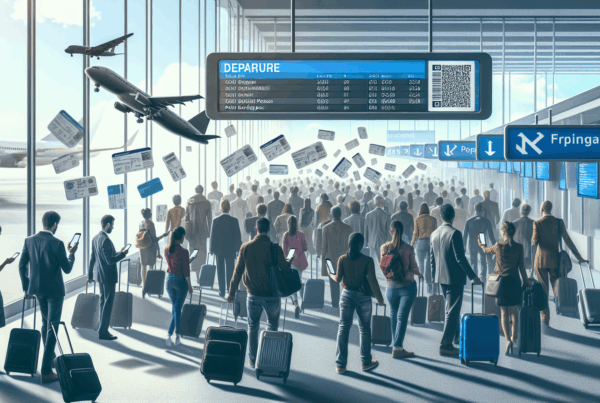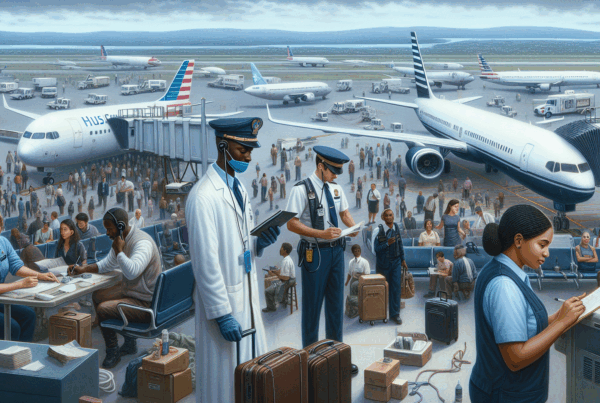The promise of high-speed Internet access at 11,000 meters is no longer a distant dream, but a reality on long-haul aircraft. The announcement by a major international airline to equip several hundred aircraft with ultra-high-speed satellite connectivity is redefining the expectations of travelers, airlines and airport operators alike. For French and international passengers alike, this development could well change the way we work, play and stay connected in flight.
Emirates and Starlink: a switch to unrivalled connectivity
According to Flywest, the operator has taken the initiative of equipping a large portion of its long-haul fleet with the Starlink solution. The aim of this deployment is to offer in-flight Internet connection ultra-fast and stable on emblematic air transport aircraft. The aim is to significantly enhance the passenger experience by offering a service that is sufficiently powerful for streaming, videoconferencing and demanding business applications, where traditional geostationary satellite systems have shown their limitations.
What difference does Starlink make to existing systems?
The main difference lies in the architecture: Starlink operates via a constellation of low-earth-orbit satellites, which greatly reduces the amount of space required to operate the system. latency and increases available bandwidth. For passengers seeking Wi-Fi on board, this means fewer interruptions, smoother web browsing and the ability to watch high quality videos or take part in live meetings without interruptions. This technological advance responds to a growing demand for continuous connectivity, particularly among business travelers and digital nomads, who now consider Internet access to be an essential service, on a par with in-flight meals or seat comfort.
Passenger experience: uses, fares and expectations
With a more powerful connection, on-board uses are becoming more complex. Passengers are now able to use collaborative applications, send large files, consume streaming content or stay in constant contact. The question of pricing remains central: some carriers may offer basic access free of charge, while reserving premium offers for streaming and videoconferencing. From a marketing point of view, the promise of a Free high-speed Wi-Fi in both economy and business classes can become a powerful differentiator in attracting demanding customers.
Operational consequences and business models for companies
The adoption of Starlink connectivity has an impact on maintenance, energy consumption and the management of on-board services. The installation of specific antennas and equipment requires technical adaptations and certifications. In return, airlines can monetize Internet access in a number of ways: à la carte offers, frequent subscriptions or integration into loyalty programs. The digital transformation of cabins also includes the possibility of offering related services, such as in-flight sales via applications, streaming of exclusive content or interactive entertainment services, thus strengthening the commercial relationship between the company and its customers.
Impact on on-board product and competition
In a market where the customer experience is becoming the key differentiating factor, the provision of fast, reliable Internet access can be a major factor in a company's choice. Carriers that quickly integrate these technologies are ahead of the game in terms of customer satisfaction and ancillary revenues. For traditional players, this is a strong signal: the in-flight digital experience has become a decisive competitive criterion.
Regulatory issues, security and data protection
The extension of high-performance in-flight Wi-Fi raises regulatory and cybersecurity issues. Aviation authorities and national agencies are keeping a close eye on the integration of new satellite links to ensure the security of onboard systems and compliance with standards. Protecting passengers' personal data, encrypting communications and ensuring strict separation between avionics and commercial networks are priorities. Airlines will need to work with suppliers and authorities to ensure resilience and confidentiality of exchanges, while providing a seamless experience for users.
Impact on ports of call and global connectivity
Beyond on-board comfort, robust connectivity also changes ground operations. More reliable data links enable better monitoring of operations, real-time software updates and optimized cargo and passenger management. For airports and international hubs, the arrival of better-connected aircraft can stimulate the local digital ecosystem, foster innovative services and improve coordination between airlines and service providers.
For French and international travelers alike, the adoption of Starlink by a major carrier is a clear indicator that in-flight connectivity is entering a new era. Between heightened customer expectations, new business opportunities for airlines and the need for a stronger regulatory framework, this development deserves close attention if we are to understand the future of in-flight Wi-Fi and its impact on air travel.




